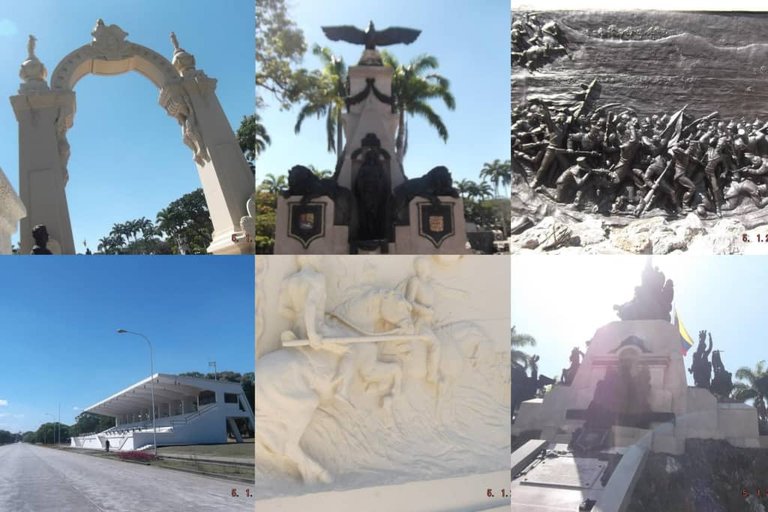
Reviewing my photo archive I found some photographs of my visit to Campo de Carabobo in 2013, located in the city of Valencia, Carabobo state, it is a monumental walk whose construction was carried out during the mandate of the then president Juan Vicente Gómez, as a tribute to the heroes and soldiers who participated in the battle of Carabobo (June 24, 1821), which was of great importance and decisive in achieving the independence of Venezuela from Spanish rule, my visit to this outstanding historical field was the first days of the month . In January, the place was relatively alone, perhaps because of the date there were not a large number of visitors; Last week I had the opportunity to talk with a man born in Valencia, who explained to me that the place regularly receives many visits throughout the year, in addition that the then president was in charge of carefully supervising the plans and progress of the construction of this emblematic monument, national pride of the inhabitants of Carabobo and of all Venezuelans, since one of the battles that sealed the country's independence was fought there, he wanted everything to remain just as he had planned.
According to the information provided by Mr. Luis, who for several years dedicated himself to teaching at a high school in the state of Carabobo, specifically his area was history, he explained to me that the Carabobo field was built to commemorate the centenary or the 100 years of this important battle in the fields of Carabobo, although there were casualties and many soldiers offered their lives in this fierce combat, they achieved great progress to free the territory from colonizing oppression; The field also has a particular and important monument called the Arc de Triomphe. There are several sculptures in it in order to honor the heroes of national independence and the great victory that was obtained in this place. The monument is made up of two columns. which come together in an arch where you can read several inscriptions, the columns symbolize peace and victory.
In the field there are also other sculptures and monuments such as the altar of the homeland, where you can see the figures of important heroes of the country, including Simón Bolívar riding his horse, located at the top of the altar, and the sculpture of others. . heroes that accompany him in this emblematic monument, moving along the route there is another white monument with lions on the sides and a bird that is located at the top, these sculptures are made of bronze and the monument of marble.
Revisando mi archivo de fotos encontré algunas fotografías de mi visita a Campo de Carabobo el año 2013, ubicado en la ciudad de Valencia estado Carabobo, es un paseo monumental cuya construcción fue realizada durante el mandato del entonces presidente Juan Vicente Gómez, como un tributo a los próceres y soldados que participaron en la batalla de Carabobo (24 de junio de 1821), la cual fue de gran importancia y decisiva para lograr la independencia de Venezuela del dominio español, mi visita a este destacado campo histórico fue los primeros días del mes de enero, el lugar estaba relativamente solo, tal vez por la fecha no había gran cantidad de visitantes; la semana pasada tuve la oportunidad de conversar con un señor nacido en Valencia, quien me explicó que regularmente el lugar recibe muchas visitas durante todo el año, además que el entonces presidente se encargó de supervisar minuciosamente los planos y avances de la construcción de este emblemático monumento, orgullo nacional de los habitantes de Carabobo y de todos los venezolanos, pues allí se libró una de las batallas que selló la independencia del país, quería que todo quedara tal cual como lo había planificado.
De acuerdo a la información suministrada por el Señor Luis, quien durante varios años se dedicó a la enseñanza en un liceo del estado Carabobo, específicamente su área era la historia, me explicó que el campo de Carabobo fue construido para conmemorar el centenario o los 100 años de esta importante batalla en los campos de Carabobo, aunque hubo bajas y muchos soldados ofrendaron su vida en este férreo combate obtuvieron un gran avance para librar al territorio de la opresión colonizadora; el campo cuenta también con un particular e importante monumento llamado arco del triunfo en él se encuentran varias esculturas con el fin de honrar a los próceres de la independencia nacional y la gran victoria que se obtuvo en este lugar, el monumento está formado por dos columnas las cuales se juntan en un arco donde se pueden leer varias inscripciones, las columnas simbolizan la paz y la victoria.
En el campo se encuentran también otras esculturas y monumentos como el altar de la patria, donde se pueden apreciar las figuras de importantes próceres del país entre ellos, Simón Bolívar montado en su caballo, ubicado en la parte superior del altar y la escultura de otros. próceres que lo acompañan en este emblemático monumento, avanzando en el recorrido hay otro monumento de color blanco con unos leones en los laterales y una ave que se ubica en la parte superior, estas esculturas están hechas de bronce y el monumento de mármol.
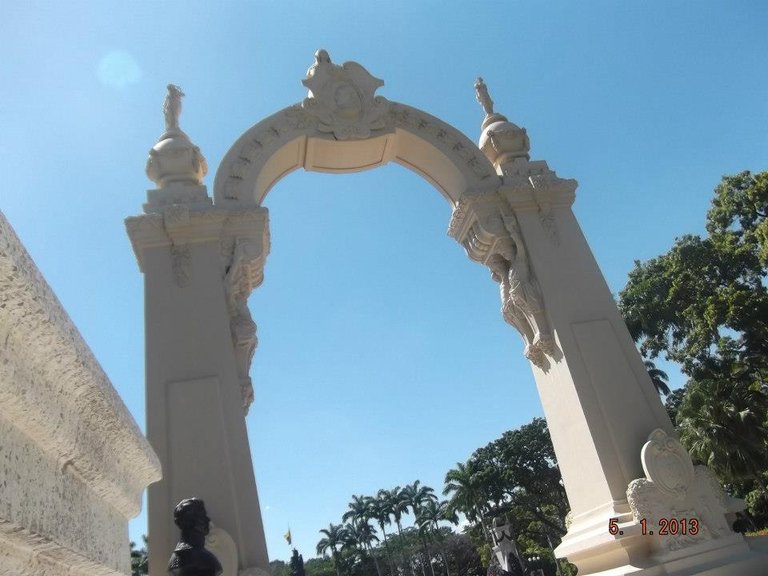
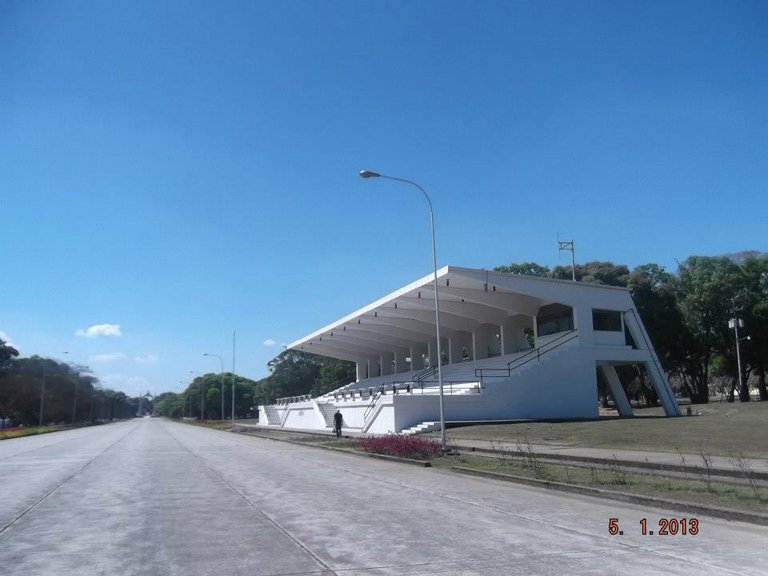
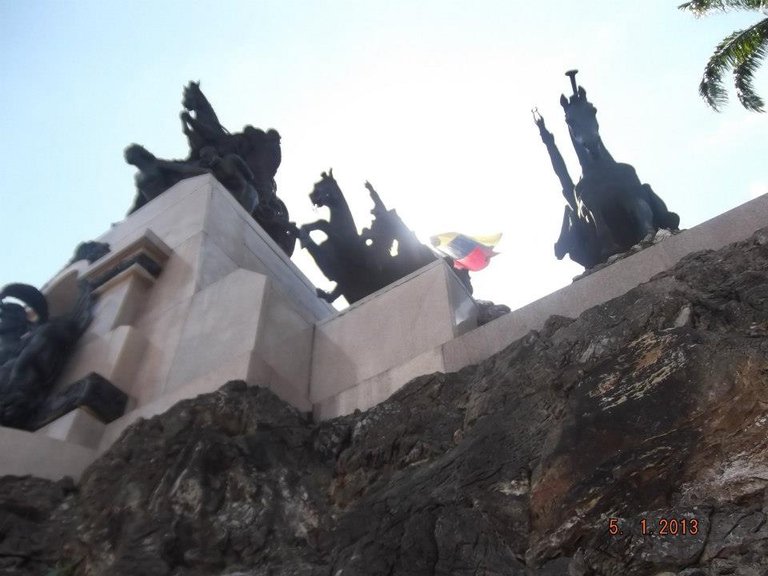
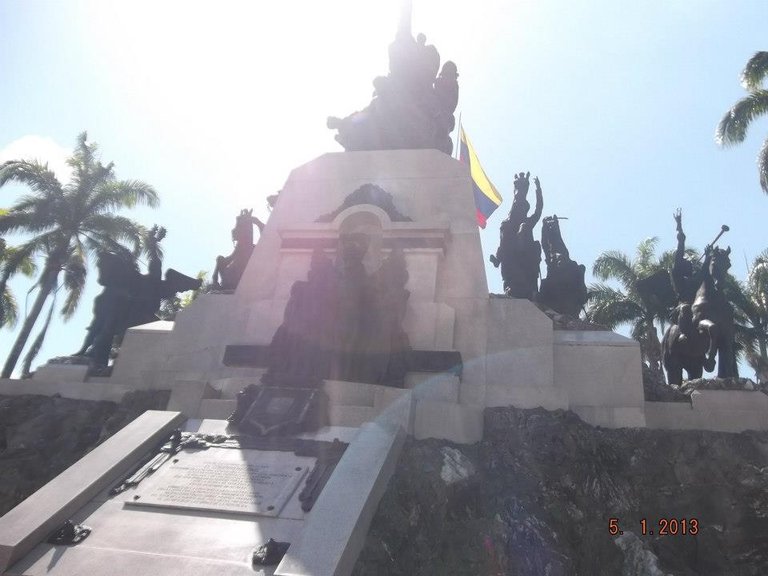
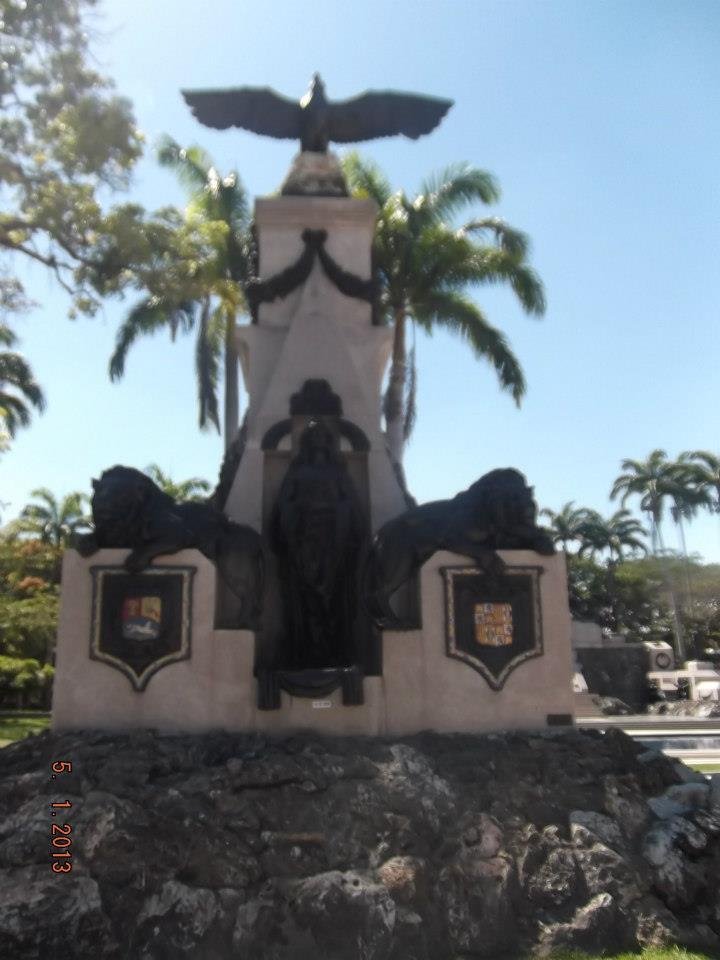
A detail that draws attention in this field is a high relief mural which reflects the development of the Battle of Carabobo, you can see how both sides are organized and face each other in a tough battle, several soldiers on foot and some mounted on his horse attacking from the rear.
Un detalle que llama la atención en este campo es un mural en alto relieve el cual refleja el desarrollo de la Batalla de Carabobo, se puede apreciar como ambos bandos están organizados y se enfrentan en una dura batalla, varios soldados a pie y algunos montados en su caballo atacando por la retaguardia.
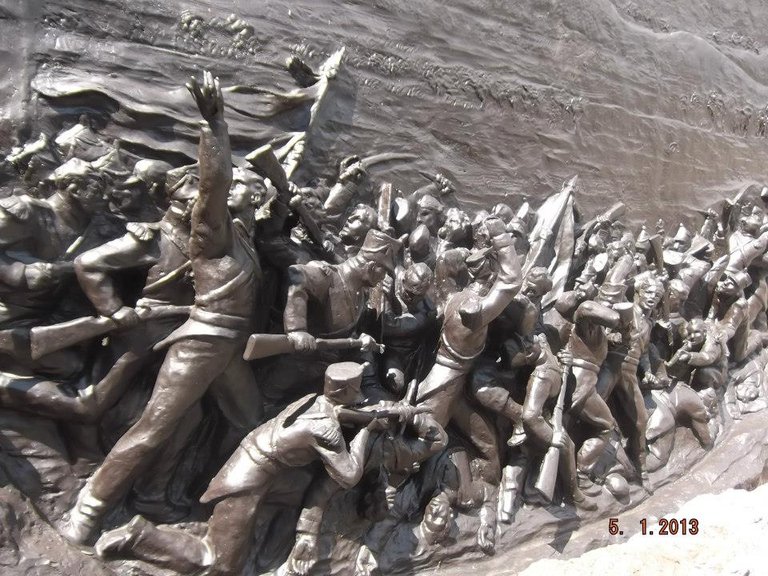

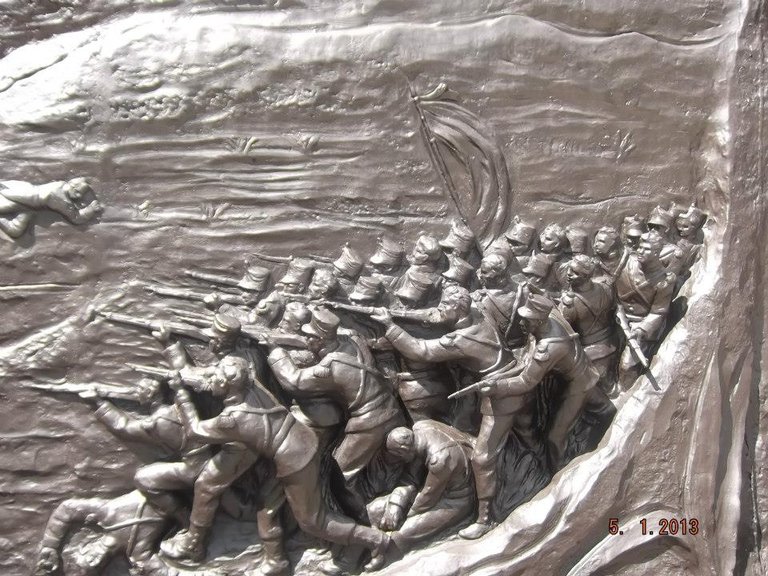

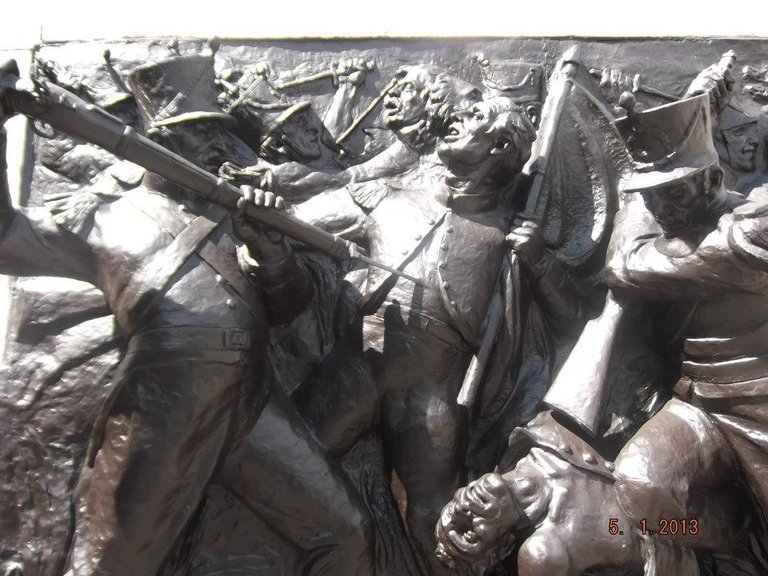
Under the triumphal arch is the famous tomb of the unknown soldier, which is guarded by the honor guard. These soldiers do their routine and bow for the changing of the guard, a ceremony worthy of admiration; There is also a high relief or frieze where the figure of Commander Páez can be seen riding his horse. In the other mural, it is believed to be the death of Pedro Camejo, a loyal and brave soldier who was under the orders of José Antonio Páez. You can also see a mural in white where the Liberator and Páez are apparently located, who had under their command a platoon of soldiers who acted in a coordinated manner to achieve the victory of the battle, Commander Páez attacked from the rear with his platoon of soldiers and this allowed them to win, their performance was truly decisive, since their troop was made up of brave and seasoned llaneros.
Visiting this place is like traveling back two centuries and learning part of the history and experiences of these heroes in a field where they faced a great enemy to achieve the long-awaited dream of the Liberator sworn on the Sacred Mountain in the company of his teacher Simón Rodríguez, where he said that he would not give rest to his soul until he saw his country free from the oppressive yoke.
The field also has a presidential tribune where commemorative events of the Battle of Carabobo are held every June 24; Military parades, parades and floats accompany this great event, it is a day of national pride where Venezuelans celebrate the victory that the heroes and soldiers achieved that historic June 24, 1821, many of them offering their lives.
Debajo del arco del triunfo se ubica la famosa tumba del soldado desconocido, la cual es resguardada por la guardia de honor, estos soldados hacen su rutina y reverencia para el cambio de guardia, una ceremonia digna de admirar; también hay un alto un relieve o friso donde se observa la figura del comandante Páez montado en su caballo, en el otro mural se cree que es la muerte de Pedro Camejo, un leal y valiente soldado que estuvo bajo las órdenes de José Antonio Páez, también se puede apreciar en color blanco un mural donde al parecer se encuentra el Libertador y Páez, quiénes tuvieron bajo su mando un pelotón de soldados que actuaron de manera coordinada para lograr el triunfo de la batalla, el comandante Páez atacó por la retaguardia con su pelotón de soldados y esto les permitió vencer, su actuación fue realmente decisiva, pues, su su tropa estaba conformada por llaneros valientes y aguerridos.
Visitar este lugar es trasladarse dos siglos atrás y conocer parte de la historia y vivencias de estos próceres en un campo donde enfrentaban a un gran enemigo para lograr el ansiado sueño del Libertador jurado en el monte Sacro en compañía de su maestro Simón Rodríguez, donde dijo que no daría descanso a su alma hasta ver a su patria libre del yugo opresor.
El campo cuenta también con una tribuna presidencial donde se realizan los actos conmemorativos de la Batalla de Carabobo cada 24 de junio; desfiles militares, paradas y carrozas acompañan este magno evento, es un día de orgullo nacional donde los venezolanos celebramos la victoria que los próceres y soldados lograron aquel histórico 24 de junio del año 1821, ofrendando muchos de ellos su vida.

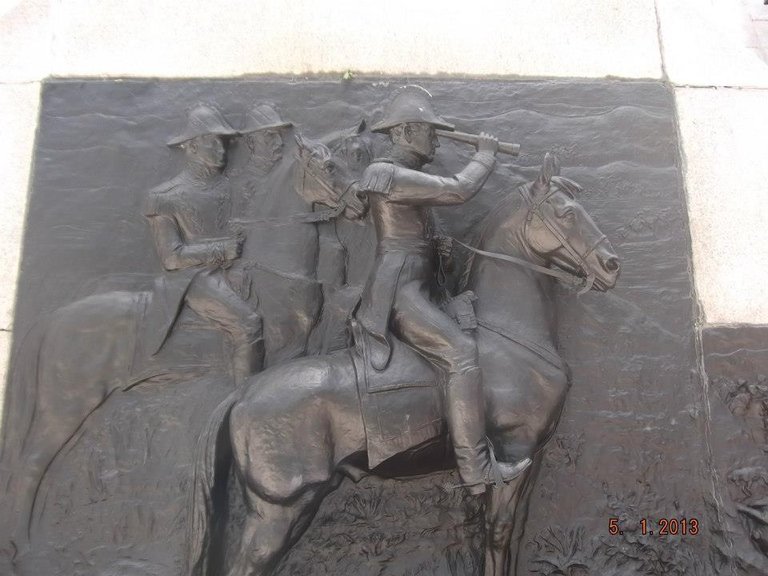
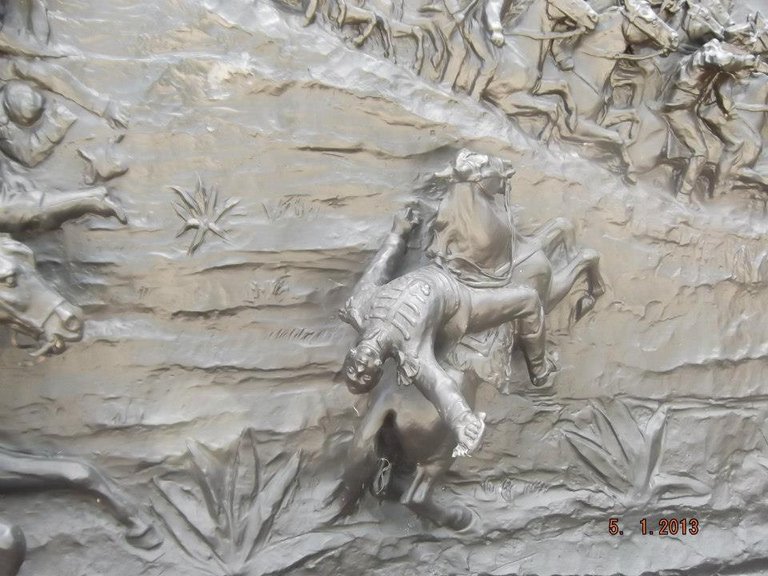

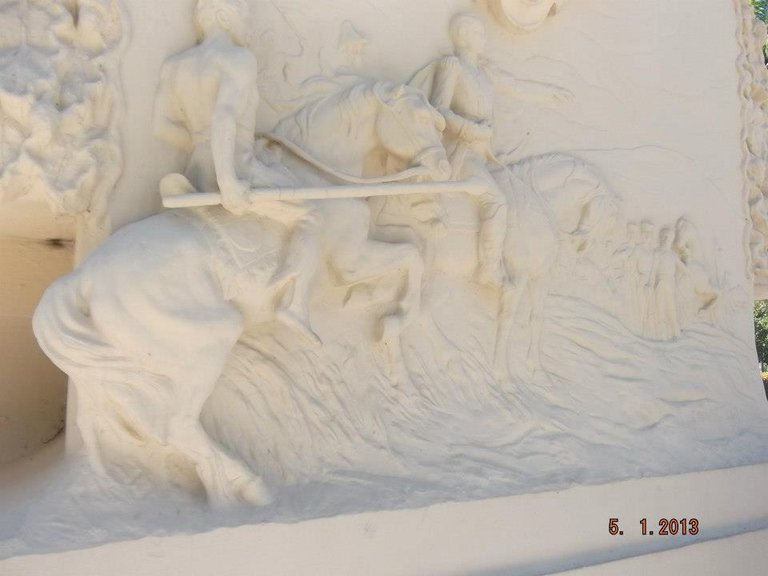

Blessings!

¡Bendiciones!
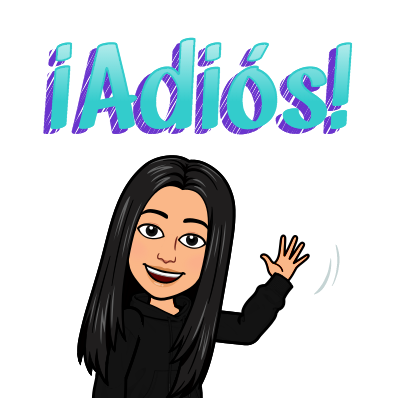
Código Worldmappin: [//]:# (!worldmappin 10.01050 lat -68.15414 long d3scr)
All images are my own, captured by a Síragon LC-3000 camera.
Todas las imágenes son de mi autoría, capturadas por una cámara Síragon LC-3000.
The reliefs on the body of the monument are very detailed and depict the situation. People should appreciate the sculptor, it should not be missed. Cool!
Greetings @titisnariyah, the reliefs are a great work that reflects the different phases of the battle, the sculptor did a great job taking care of every detail in the soldiers' attire and the figures of the horses.
Congratulations, your post has been added to WorldMapPin! 🎉
Did you know you have your own profile map?
And every post has their own map too!
Want to have your post on the map too?
Thank you very much @worldmappin.
Greetings!
Maybe for us it's just a work of art, but I'm sure the monument was made with sadness and a deep sense of trauma @belkyscabrera
Greetings @maytom, the monument is a beautiful work of art that pays tribute to the many soldiers who fought for the country's independence.
Landmarks depicting national heroes serve as concrete testaments to a region's or country's political, historical, and cultural heritage. Venezuela is blessed to have a solid foundation. I'm particularly impressed by the elaborate sculptures and relief murals of the Field of Carabobo due to their artistic prowess. Have an enjoyable one @belkyscabrera! ☺️
Hi @storiesoferne, Campo de Carabobo and its outstanding monuments are an important part of the historical and cultural heritage of the country, in this place was fought the battle that sealed the independence of Venezuela, the work they did on the sculptures, the arch and murals is really admirable.
Greetings and blessings!
As you said that this art is detail and looks real.
Hello @viviehardika, the mural represents the battle of Carabobo, they did a great job placing and organizing each sculpture.
Greetings!
This historic monument is definitely filled with artistic power @belkyscabrera! I'm simply awe-inspired by the tremendous creativity of the sculptures and reliefs portraying interesting stories of national relevance. ☺️
Greetings @archmoments, the work on the mural is amazing, the sculptor took care of every detail when making each of the figures, the high relief painting was my favorite part when visiting this outstanding monument in the Carabobo state.
Happy and blessed week!
Hello @nnurdiani, Campo de Carabobo, is a beautiful monument that pays tribute to the soldiers who participated in this important battle to achieve the independence of Venezuela.
Greetings!